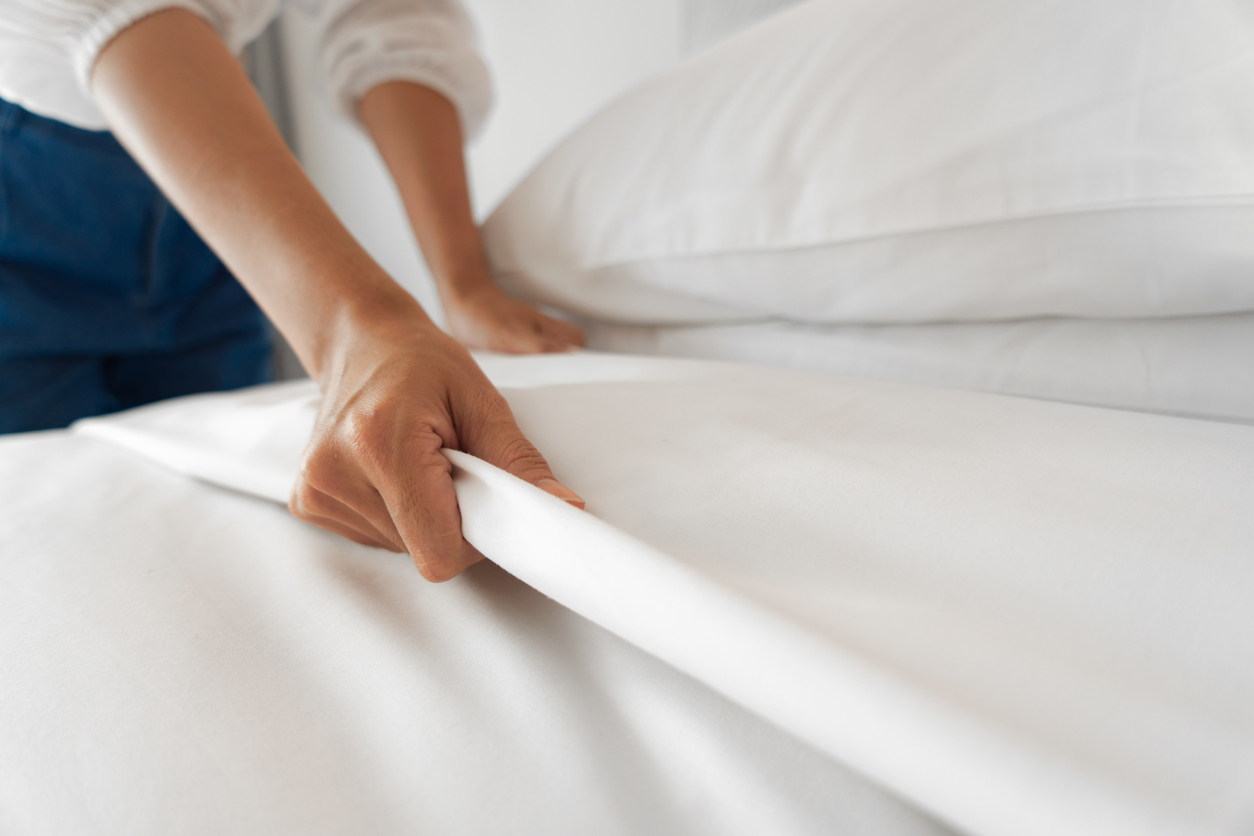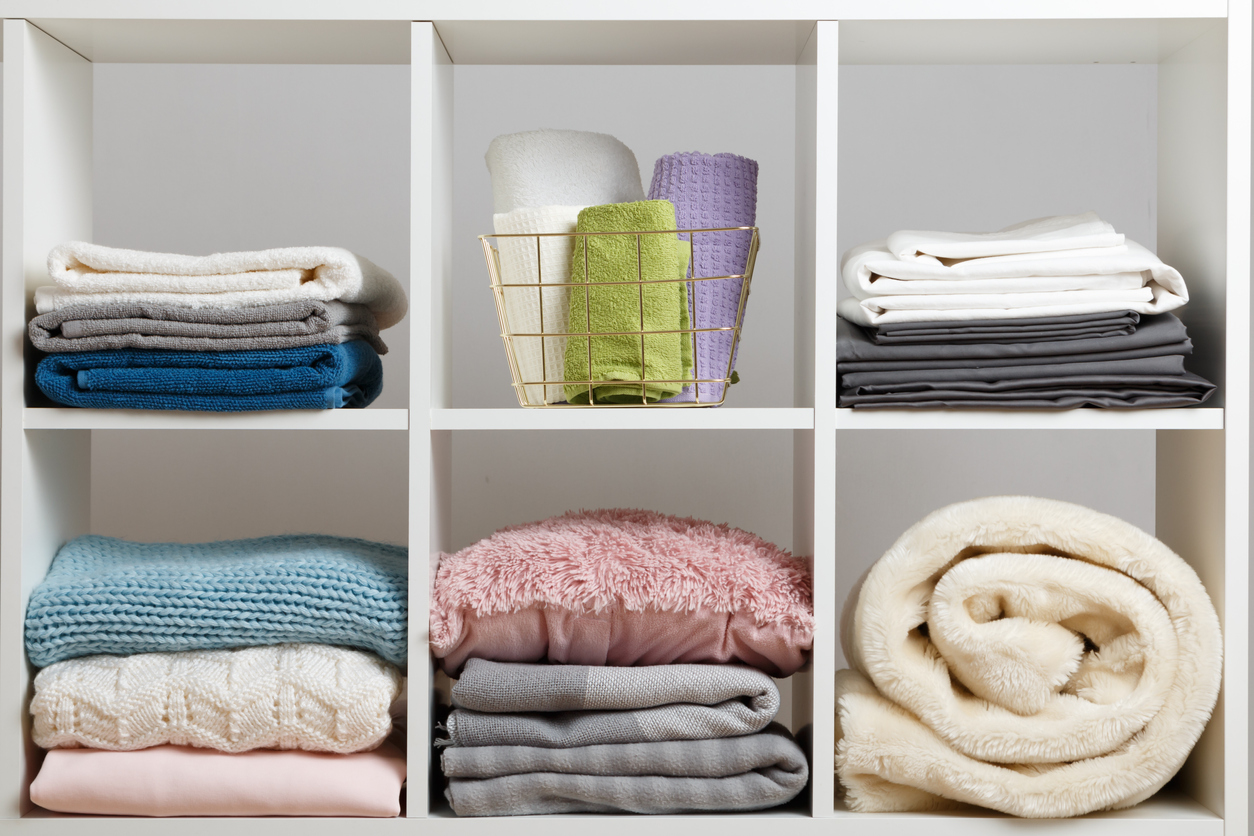
Did you know that the right type of bed sheet determines how soundly you sleep?
A recent study drew a direct link between cloth quality and sleep quality.
So when you find the perfect set of bed sheets, make sure to protect your investment. Consider it a sleep investment.
Read on for a nuts and bolts explainer on how to care for bed sheets so they last longer.
1. Wash Care for Bed Sheets
Many factors affect the look and feel of bed sheets. But none more important than how you wash them.
Wash bed sheet fabrics on a gentle wash cycle. Choose a cool or lukewarm water setting. If you are limited in temperature settings, pick the warmer one.
Use no more than a ¼-cup of detergent. Adding more will cause the cloth fibers to wear out faster.
Don’t Overstuff
No matter how tempting, running an overpacked wash load is a no-no. Give your sheets room to move.
This translates to fewer rips and tears on the fabric. It will add months (if not years) to your bedding.
There’s nothing more distressing than opening up the washer lid and seeing bed sheets tangled up and stretched around the agitator.
Avoid Bleach
This common household cleaner contains caustic agents that will corrode delicate fibers. To brighten up colors, try using an oxygen bleach that is a non-chlorine bleach.
Use Hot Water Sparingly
Don’t run your weekly load of bed sheets on the hot setting. Doing so will cause bed sheets to fade and stretch. Only use hot water for dirty sheets after someone’s been ill and the linens need a good sanitizing soak.
Don’t Mix Sheets With Clothes
Resist the urge to throw in a few towels or a pair of jeans in with the bed sheets. Other heavy fabrics are too rough to spin with sheets. The delicate bedding could snag on a zipper and cause a rip.
2. How-Tos for Drying Bed Sheets

When cleaning bed sheets, don’t overlook the drying process.
The ideal way to dry sheets is to hang them outside on the clothesline. For most home or apartment dwellers, that method is impractical.
The second best option is to run the linens in the dryer.
Be sure to give the sheets a good shake before placing them in the dryer. Fluffing out sheets keeps linens from getting knotted while tumbling.
Toss bed sheets in the dryer and let them roll around on the medium to low setting. Despite being bulky, bed sheets don’t need a high-heat setting or an extended time in the dryer.
Too much time at a high temperature causes the cloth to shrink, wrinkle, and wear out quicker.
Don’t Combine Different Fabrics
Bed sheets prefer alone time in the dryer. Sheets could get twisted up in towels and cause the linens to get stretched out. Towels will also leave tons of little balls of lint on the bed sheets and ruine the look and feel of the sheets.
Avoid Over Drying
Run bed sheets in the dryer for the shortest amount of time needed. Unnecessary dryer time leads to overdrying.
When sheets spend too much time in high temperatures, their natural fibers start to deteriorate. Frayed fibers lead to a shorter lifespan.
3. Folding and Storage Make a Difference

How you fold and store bed sheets matters. Follow the right steps to add more quality time with your comforting linens.
Protect your bed sheet investment by keeping sheets neatly folded and organized in the linen closet.
And only keep fresh and clean sheets stored away. Don’t slide a half-slept sheet into the pile of folded sheets, no matter how briefly the bed sheets were used.
Doing so will invite a host of dust, dead skin cells, and other germy bacteria into storage. This is an open invitation for dust mites, which can cause bed sheets to lose months of their lifespan.
Try storing clean sheets in a breathable fabric bag to reduce dust buildup. Sometimes a matching pillowcase might do the trick.
Avoid encasing bed sheets in a plastic zippered bag or container. The lack of airflow leads to yellow-stained sheets.
4. Change Your Bed Sheets Often, But How Often?
Experts recommend bed sheets need to be switched out once a week.
A recent poll by the National Sleep Foundation found that only 6 in 10 people change their sheets at least once a week.
Following the once-a-week rule will help you remember when to wash sheets.
It’s a good idea to have at least three sets of comfortable bed sheets on hand for each mattress. Rotating between the different sets will keep sheets from being overused.
5. Pick the Right Bed Sheet for Your Mattress

Quality fibers will ensure long-lasting comfort. So don’t hold back when choosing the type of bed sheets to buy.
Many of today’s most popular and environmentally friendly fibers are being woven into bed sheets.
It’s not uncommon to see bed sheets made from Tencel, bamboo, and modal. Each offers a unique blend of sleep benefits.
- Tencel is woven from eucalyptus trees and offers a silky-smooth texture.
- Bamboo fibers have a softer feel and naturally help with allergies
- Modal is a blend of cotton and spandex and feels like you’re sleeping on your favorite soft T-shirt
Mattress retailers like Best Mattress offer consumers premium breathable sheet sets that encourage a good night’s rest.
Be sure to buy the right size bed sheet for your mattress.
A thicker mattress means you will need a deeper-sized bed sheet. An ill-fitting bed sheet leads to over-stretched fabrics.
The Takeaway
Lengthening the lifespan of your linens is not rocket science.
Once you’ve invested in a premium bed sheet set for a comfortable night’s sleep, maintenance is key.
To care for bed sheets, follow some key washing and drying tips, and you will be on the road to rest and tranquility.
For other bedding and sleep tips, check out our blog for useful ideas.
